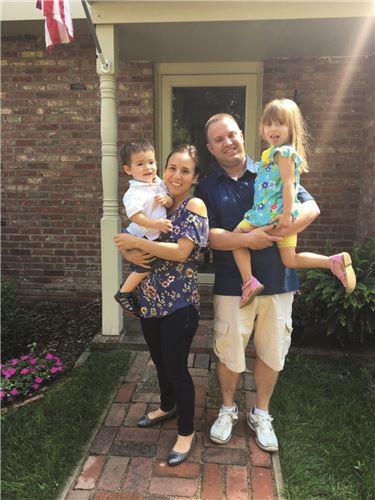
As Torrance Memorial’s NICU moves to a new home, its longtime medical director reflects on a Christmas Eve miracle.
When Stephanie and John Kane arrived at Torrance Memorial Medical Center on December 24, 2016, they had no reason to suspect the delivery of their new baby would be anything but normal. Stephanie’s pregnancy had been uneventful, and she had reached her 38th week. This was significant for the Kanes, since their first child, Annabelle, had been born prematurely and spent several weeks in Torrance Memorial’s Neonatal Intensive Care Unit (NICU) before coming home.
A Routine Delivery Becomes a Life-Threatening Emergency
Having achieved a full-term pregnancy meant they had already avoided the complications experienced with Annabelle. But several hours into the labor, Stephanie and the baby began to show abnormal symptoms, and events quickly took an alarming turn.
First the baby’s heart rate dropped, showing he was in fetal distress. This is not that unusual. As Dr. Jerry Schwartz, medical director of neonatology at Torrance Memorial Medical Center, points out, “When this occurs during a delivery at Torrance Memorial, the obstetrics team is usually prepped and ready to do a caesarean section within minutes. We consider this a routine emergency.”
What made this situation different was that Stephanie was also in serious distress. She was having trouble breathing and had developed an excruciating headache. Within minutes she was taken into surgery, where she went into full cardiac arrest.
Stephanie had a condition called an amniotic fluid embolism (AFE), an extremely rare and life-threatening pregnancy complication. AFE happens when amniotic fluid, fetal cells, hair or other debris make their way into the mother’s blood. This triggers a serious reaction that can include heart failure, organ failure and massive internal bleeding.
Once in surgery, the obstetrics, neonatal and code blue teams immediately went to work to save both Stephanie and her newborn. Led by Dr. Patrick Donley, the on-staff obstetric anesthesiologist, the obstetrics team performed a caesarean to deliver the baby. The neonatal team, led by Dr. Schwartz, worked to revive the baby and transfer him to the NICU, while at the same time Torrance Memorial’s code blue team was performing CPR to restore Stephanie’s heartbeat.
All this activity occurred in the span of about 15 minutes and, as Dr. Schwartz observed, “It was done in almost complete silence. It was like a ballet. Everyone was so well practiced we didn’t need to say much to each other. And it was incredibly intense in that room. You could have heard a pin drop.”
The code blue team was able to bring Stephanie back, and she was moved to the adult ICU, where she remained for more than two weeks until her organ function was restored. Meanwhile John was able to bring his son, Jack, home with him after eight days. A situation that could have easily ended in tragedy, instead had a happy ending.
A Long-Term Commitment to the Best NICU Care
Dr. Schwartz believes much of the credit for saving Stephanie and her son goes to the medical center’s commitment to providing the most advanced care for families in the South Bay community.
“In the 29 years I have been at this hospital, we have always been able to get what we need to provide what is best for our babies, whether it’s staffing, equipment or new technology. This means we offer a level of care you won’t find in most Level III NICUs, and we can handle almost anything that comes our way.”
This same level of commitment led to a recent redesign of the NICU, which opened in August. It features 25 private rooms to replace the previous open-bay plan. Parents can have private time with their baby and even spend the night, giving mothers and their babies more bonding time during those important early days and weeks.
The benefits for infants in a private NICU setting are significant, including improved weight gain and temperature regulation, as well as reduced infections and stress for mom and baby. It also improves neurodevelopmental outcomes.
A Lasting Impact
Meanwhile the Kane family believes they have much to be grateful for. Their children are happy and healthy, and Stephanie’s health is restored. They have since moved to Pittsburgh, Pennsylvania, but Torrance Memorial remains in their thoughts.
“I want to send the people at Torrance Memorial a heartfelt ‘thank you’,” says John. “We have a beautiful family, and that wouldn’t have happened without them.”
Written by Michelle Abt






